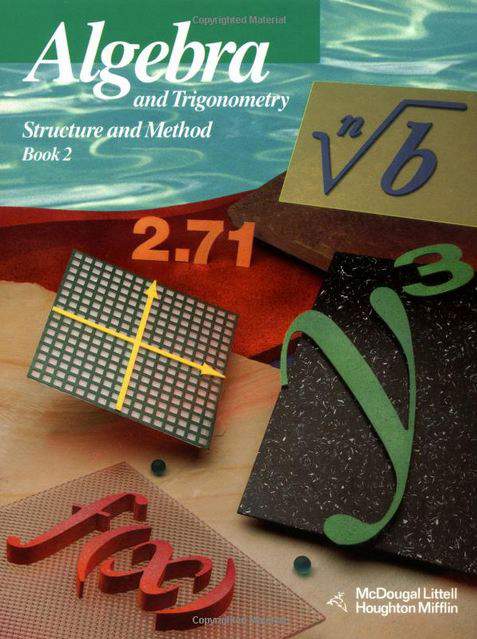Connecting...

This is a quick preview of the lesson. For full access, please Log In or Sign up.
For more information, please see full course syllabus of Algebra 2
For more information, please see full course syllabus of Algebra 2
Algebra 2 Solving Equations
Lecture Description
Verbal expressions can be translated into algebraic expressions and vice versa by using different techniques shown in the video. Translating a verbal “equal” into an algebraic expression will show you an equation. When solving equations, we need to isolate the variable on one side, and the way to accomplish that is to use the properties of equality. There are some properties of equality that you have used before, but you still need to know them because they are important when solving equations. For example, every equation satisfies the addition and subtraction property, but you'll learn more properties in the lecture.
Bookmark & Share
Embed
Share this knowledge with your friends!
Copy & Paste this embed code into your website’s HTML
Please ensure that your website editor is in text mode when you paste the code.(In Wordpress, the mode button is on the top right corner.)
×
- - Allow users to view the embedded video in full-size.
Next Lecture
Previous Lecture









































 Carleen Eaton
Carleen Eaton Grant Fraser
Grant Fraser
 Answer Engine
Answer Engine




0 answers
Post by Dinesh Reddy Gangavarapu on June 8, 2020
Hey Professor,
I just wanted to let you know that your doing a great job but my personal feeling is that you look way too much at the pieces of paper beside even when you're solving the equations, it sorta throws me off every time you look at the paper so ya........
0 answers
Post by Fitri Cerado on April 13, 2017
I found it wrong also X must be equal to 7 in the 4th practice question
1 answer
Last reply by: DJ Sai
Sun Dec 16, 2018 6:26 PM
Post by Dr Carleen Eaton on July 31, 2014
Darin, I cannot find this part of the lecture. Can you clarify at what time this occurs?
2 answers
Last reply by: Leonardo Luo
Sat May 2, 2020 7:27 AM
Post by Darin Weaver on July 29, 2014
The fourth practice question is incorrect. Going from step 12 to 13, it states that 5 + 9 = 13 resulting in the answer to the equation 5 + 9 = 2x being x = (13/2).
5 + 9 = 2x should result in x = 7. (5 + 9 = 14, NOT 13)